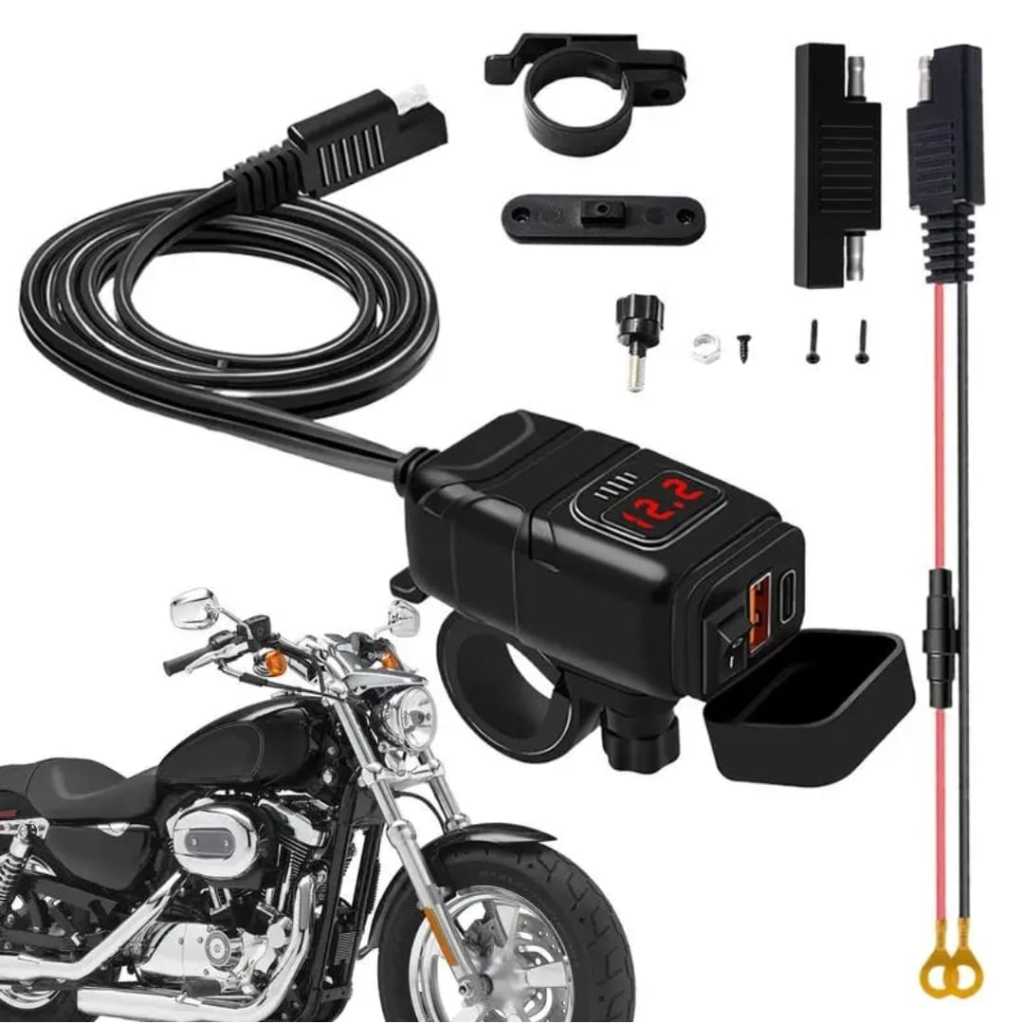Absolutely! Here’s a comprehensive 2800-word article on motorcycle USB chargers, structured with `
` and `
` tags instead of “.
In today’s interconnected world, staying powered up while on the go is more crucial than ever. For motorcycle riders, this means having a reliable way to charge smartphones, GPS devices, action cameras, and other essential gadgets. A motorcycle USB charger is the perfect solution, offering a convenient power source for your devices during long rides. This article delves into the various aspects of motorcycle USB chargers, from their types and features to installation tips and safety considerations.
Why a Motorcycle USB Charger is Essential

The modern rider relies on a multitude of electronic devices. Smartphones provide navigation, communication, and entertainment. GPS units guide you on unfamiliar routes. Action cameras capture memorable moments. Without a reliable power source, these devices can quickly drain their batteries, leaving you stranded or unable to document your adventures. A motorcycle USB charger eliminates this problem, ensuring your devices stay charged throughout your ride.
Enhanced Navigation and Communication

Smartphones and GPS units are indispensable tools for navigation. A USB charger keeps these devices running, preventing battery drain and ensuring you stay on course.
Capturing and Sharing Memories
Action cameras capture stunning footage of your rides. A USB charger ensures the camera remains powered, allowing you to record every moment.

Convenience and Peace of Mind
A USB charger eliminates the need to carry bulky power banks.
Types of Motorcycle USB Chargers
Motorcycle USB chargers come in various forms, each with its own advantages and disadvantages. Understanding the different types helps you choose the best option for your needs.
Handlebar-Mounted USB Chargers
These chargers are designed to be mounted directly onto the handlebars, providing easy access to the charging port.
Battery Terminal USB Chargers
These chargers connect directly to the motorcycle’s battery terminals.
SAE Connector USB Chargers
SAE (Society of Automotive Engineers) connectors are commonly found on motorcycles for battery charging.
Cigarette Lighter/12V Socket USB Adapters
Some motorcycles come with a 12V socket (cigarette lighter socket).
Panel-Mounted USB Chargers
These are designed to be flush mounted into a panel of the motorcycle.
Features to Consider When Choosing a Motorcycle USB Charger
Selecting the right USB charger involves considering several key features.
Weatherproofing and Durability
Motorcycles are exposed to various weather conditions, including rain, dust, and extreme temperatures.
Charging Output and Speed
The charging output is measured in amps (A). Higher amperage chargers provide faster charging.
Voltage Regulation and Protection
Motorcycle electrical systems can experience voltage fluctuations.
Mounting Options and Ease of Installation
Choose a charger that offers a mounting option suitable for your motorcycle.
Number of USB Ports
If you plan to charge multiple devices, look for chargers with multiple USB ports.
Cable Length and Routing
Ensure that the charger comes with sufficient cable length to reach your desired mounting location.
Installation Tips and Best Practices
Proper installation is crucial for ensuring the safety and functionality of your motorcycle USB charger.
Planning and Preparation
Before installation, plan the location of the charger and the routing of the cables.
Connecting to the Power Source
If connecting to the battery terminals, ensure a secure and clean connection.
Mounting the Charger
Follow the manufacturer’s instructions for mounting the charger.
Cable Routing and Management
Route the cables neatly and securely, avoiding sharp edges or moving parts.
Testing and Verification
After installation, reconnect the battery and test the charger with a device.
Safety Considerations
Safety should always be a top priority when installing and using a motorcycle USB charger.
Electrical Safety
Avoid overloading the motorcycle’s electrical system by choosing a charger with appropriate amperage.
Weatherproofing and Protection
Choose a charger with a high IP rating to protect against water and dust.
Device Protection
Use high-quality USB cables to prevent damage to your devices.
Riding Safety
Position the charger and cables so they do not interfere with your riding controls or visibility.
Maintenance and Troubleshooting
Regular maintenance and troubleshooting can help ensure the longevity and reliability of your motorcycle USB charger.
Regular Inspections
Periodically inspect the charger and cables for signs of damage or wear.
Troubleshooting Common Issues
If the charger is not working, check the connections and fuses.
Conclusion
A motorcycle USB charger is an invaluable accessory for any rider who relies on electronic devices. By choosing the right charger and following proper installation and safety guidelines, you can ensure your devices stay powered up throughout your adventures. Whether you’re navigating unfamiliar routes, capturing memorable moments, or staying connected with friends and family, a reliable USB charger provides the convenience and peace of mind you need to fully enjoy your ride.